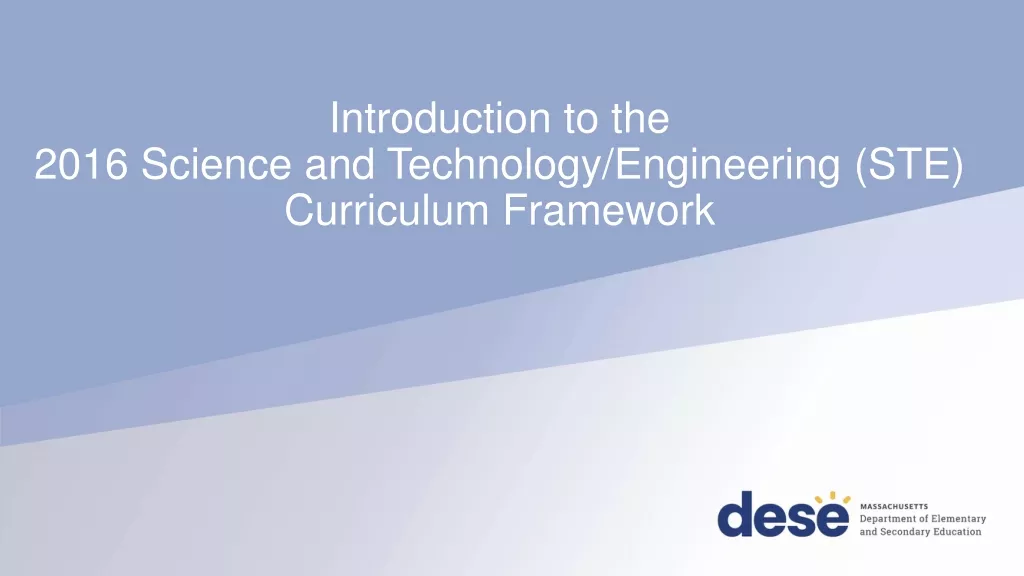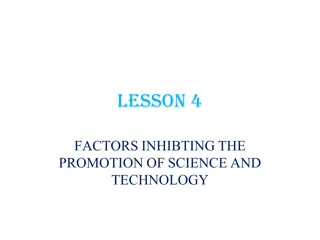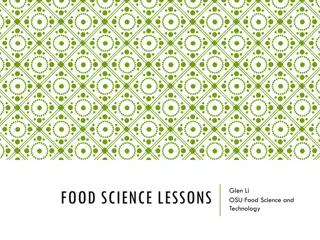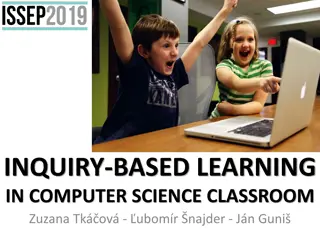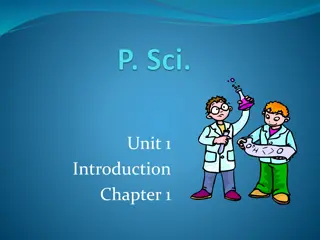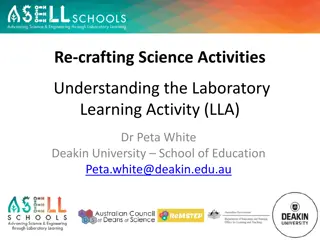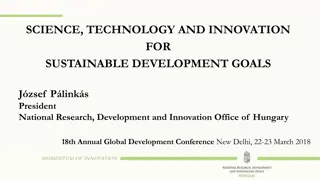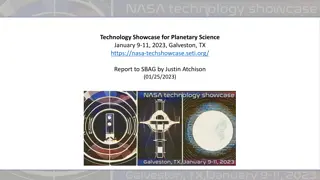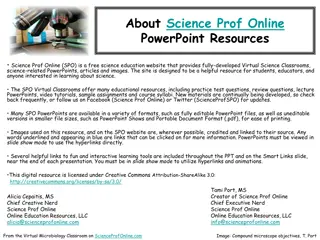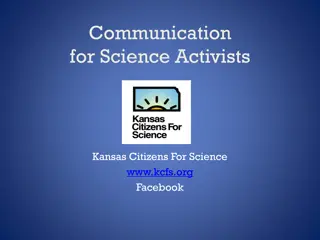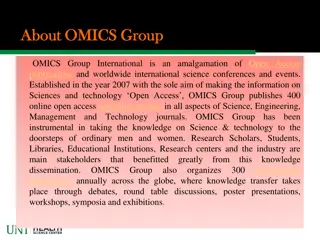Empowering Learning in Science and Technology
Explore the impact of innovative teaching methods in Computing, Design Technology, and more, fostering student engagement and skill development. Enhancing subject leadership skills for academic growth.
Download Presentation

Please find below an Image/Link to download the presentation.
The content on the website is provided AS IS for your information and personal use only. It may not be sold, licensed, or shared on other websites without obtaining consent from the author.If you encounter any issues during the download, it is possible that the publisher has removed the file from their server.
You are allowed to download the files provided on this website for personal or commercial use, subject to the condition that they are used lawfully. All files are the property of their respective owners.
The content on the website is provided AS IS for your information and personal use only. It may not be sold, licensed, or shared on other websites without obtaining consent from the author.
E N D
Presentation Transcript
Pownall Green Primary School Love learning, love life! ONLINE SUBJECT LEADERSHIP TEAM 2022-23 Science and Technologies Team 2022-23 Over the 2022-23 academic year, our Science and Technologies team have been on-line . They have taken part in a CPD programme to develop their subject leadership skills as well as leading a school improvement project in their subject areas. Our science and technologies team is made up of the subject leaders from: Computing, Design Technology, Inclusion, Mathematics and Science.
Impact Computing Children enjoy computing at all levels, especially Computer Science. Actions Developed children s ability to articulate their learning: Developed pupils ability to connect their learning to key concepts Introduced key vocabulary from the scheme of work e.g. computational thinking Trialled a range of retrieval practice activities e.g. Children interviewed each other at the end of a project. Update of school resources. Better equipped children for the technological world. Increased confidence in using key vocabulary. Used technology to enhance teaching and learning in the subject: Reviewed opportunities within the computing scheme for the addition of new technologies e.g. AI and AR with the curriculum lead. Worked with Maths and Science leads to develop the technology used in the schemes of work and combined across subject areas e.g. Data handling. Developed the infrastructure across school through new iPads, computers and software. Key learning points Computing is not just learning how to use a tool e.g. PowerPoint (Computer Literacy) but also learning how things work behind the scenes e.g. Scratch (Computer Science). This is the world we live in. Future steps Reflect on cross curricular links and adapt the computing scheme of work accordingly. Children need regular exposure to all aspects of computing. Introduce stem sentences across the subject using key vocabulary from the scheme of work e.g. computational thinking. Discrete teaching of computer skills is covered in the computing scheme of work however, technologies are used across the curriculum to enhance learning.
Impact Design and Technology Children enjoy Design and Technology across the scheme. Actions Reviewed the progression of skills across the scheme of work and increased number of savoury food projects. To develop children s ability to articulate their learning: Developed pupils ability to connect their learning to key concepts Trialled stem sentences across the projects using key vocabulary from the scheme of work within year 3. Showcased a retrieval practice activity involving key vocabulary within stem sentences (interviews at the end of a project) To use technology to enhance teaching and learning in the subject: Computing lead worked with curriculum lead to identify ways to use existing technologies to support learning and reviewed opportunities within the scheme for the addition of new technologies. Key learning points A problem needs to be solved (this is the driving force behind the project) Any design a child makes must be testable To review the current scheme of work and identify opportunities to incorporate and celebrate diversity with the inclusion of female and BAME inventors. Shared information with staff about female and BAME inventors. Some designs should fail meaning children will need to consider what they would do next time (also link with growth mind-set) There are 6 D&T essentials to consider; User Purpose Functionality Design Decisions Innovation Authenticity Next Steps Implement a range of retrieval practice activities e.g. Quiz Quiz Trade to promote sticky learning. Add female and BAME inventors to the scheme of work.
Impact Mathematics Staff have access to a wider variety of retrieval activities Retrieval activities have been established with children; over time these will be used across school but adapted to the year group Vocabulary progression now available to all staff, therefore progression across year groups is clear Lessons within the maths scheme now link to science and computing where appropriate Actions Developed children s ability to articulate their learning: Developed pupils ability to connect their learning to key concepts through the use of precise mathematical language e.g. stem sentences by using vocabulary progression document to support teachers Implemented a range of retrieval practice activities enabling the children to make connections between mathematical language and their understanding of the vocabulary used: mathematical activities have been shared to support adaptive teaching and these have been shared by a weekly email with various ideas for each year group Used technology to enhance teaching and learning in the subject: Key learning points Reviewed opportunities within the scheme for the addition of new technologies by working with the science and computing leads Retrieval practice needs to be little and often; the new activities can be used in a flexible way to support adaptive teaching Children need exposure to vocabulary for it to be embedded within their own word use There are key areas within the curriculum where cross-curricular learning can take place without reducing the mathematical learning Next Steps To develop children s reading comprehension and decision-making skills in the context of a word problem Share the word problem toolkit with staff Teach different ways for children to access word problems through a step by step approach in line with CPA
Impact Science Actions Staff have access to a wider variety of retrieval activities Activities to address misconceptions and encourage science talk are used. Vocabulary and key knowledge for each unit and phase available to all staff, therefore progression is clear Higher levels of engagement, varied ways to record and more inclusive teaching through the use of technology Developed children s ability to articulate their learning: Developed pupils ability to connect their learning to key concepts through the use of key vocabulary and knowledge provided in the scheme and in knowledge organisers. Working scientifically knowledge organisers support children to talk about science as a discipline. Implemented a range of retrieval practice activities linked to Kagan: key knowledge cards, retrieval quizzes. Used Explorify and concept cartoons to provide more opportunities to talk and reason about scientific concepts Used technology to enhance teaching and learning in the subject: Reviewed opportunities within the scheme for the addition of new technologies by working with the maths and computing leads Introduced a new data logging app to use in science lessons (Arduino Science Journal) Use of the Explorify website to support teaching and learning Use of adobe video app and pic collages to offer alternative ways to record science learning Key learning points Retrieval practice needs to be little and often; the resources can be used in multiple ways to maintain engagement. Children need exposure to vocabulary and opportunities to apply it in different contexts. Children are enthusiastic and confident when using technology in science, this offers varied ways to record learning and particularly supports children with weaker literacy skills. To develop scheme of work to ensure continuity and progression: Edited scheme of work to include 5 types of enquiry and working scientifically skills in Year 1, 2, 4 and 5 Showcased progression in a whole school display Next Steps To continue to develop scheme of work to ensure continuity and progression: Edit scheme of work to include 5 types of enquiry and working scientifically skills in all year groups To include a range of possible misconceptions within the scheme of work (these are available to staff but not yet written into the scheme) To work with EYFS to ensure there is progression Develop children s ability to articulate their learning: Provide a bank of stem sentences to support science talk.
Impact Inclusion Increase in capacity to identify individual needs and provide additional support. Growing awareness and understanding of neurodiversity across the school community. Children across school are taught with and have access to high quality books which represent diversity in terms of different families, non-white historical and present-day key figures, females in history and the present day, disability, the importance of being yourself , stories from different cultures. Actions: IT has been used to identify needs and support learners: Online PIRA and PUMA assessments have provided clear information about areas which individual pupils are less secure with. This has facilitated targeted intervention delivered by Support Staff to address these specific areas. Chromebooks have been used to assist children with their learning, including using alternative ways to record tasks such as typing, powerpoints, voice-to-text etc A range of resources have been used to identify needs and outcomes used to plan provision: Our new EP and C&L Inclusion Teacher have assessed individual pupils and provided detailed assessments with clear recommendations. These have, in turn, fed into SEND Support Plans. Our SEMH Inclusion teacher has provided valuable advice to staff and parents, following consultations and observations. The RAN/RAS assessments have provided information for Year 6 teachers to assist with access arrangements for SATs and been valuable in supporting identification of holistic needs. Key learning points Celebrating and raising the profile of diversity continues to be a priority in our school: Neurodiversity training has continued with staff (Autism, ADHD, Dyslexia) Pupils are taught about neurodiversity in age-appropriate ways, including assemblies on Autism for our Key Stage 2 pupils. There has been very positive feedback about this from parents. Books across school and role-play resources in Reception reflect diversity in terms of culture, gender, LGBT+ disability and uniqueness . Across school we have a growing number of pupils for whom managing big emotions is a challenge. Every child is unique and will experience these challenges in different ways. Some children benefit, at times, from opportunities to complete learning tasks in a supervised, quiet space, before returning to their class. This must be managed in a supportive, positive manner. Next Steps: To continue to develop awareness and skills in all staff to support children with their emotional regulation: Establish a nurture base where staff can access advice and resources to support pupils. Existing staff with ELSA training to share their knowledge and experience with colleagues. Develop provision for Reception children to access bespoke Emotional Literacy support. Establish a Learning Hub where pupils can be supported to access their learning for short periods of time when they may be finding it difficult to do this in their classroom. To continue to develop awareness and understanding of neurodiversity amongst the whole school community: Facilitate next module of AET training for all staff Facilitate assembly for KS2 on ADHD Set up a long-term plan for delivering assemblies on Autism and ADHD for children in KS2


